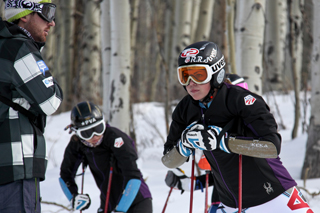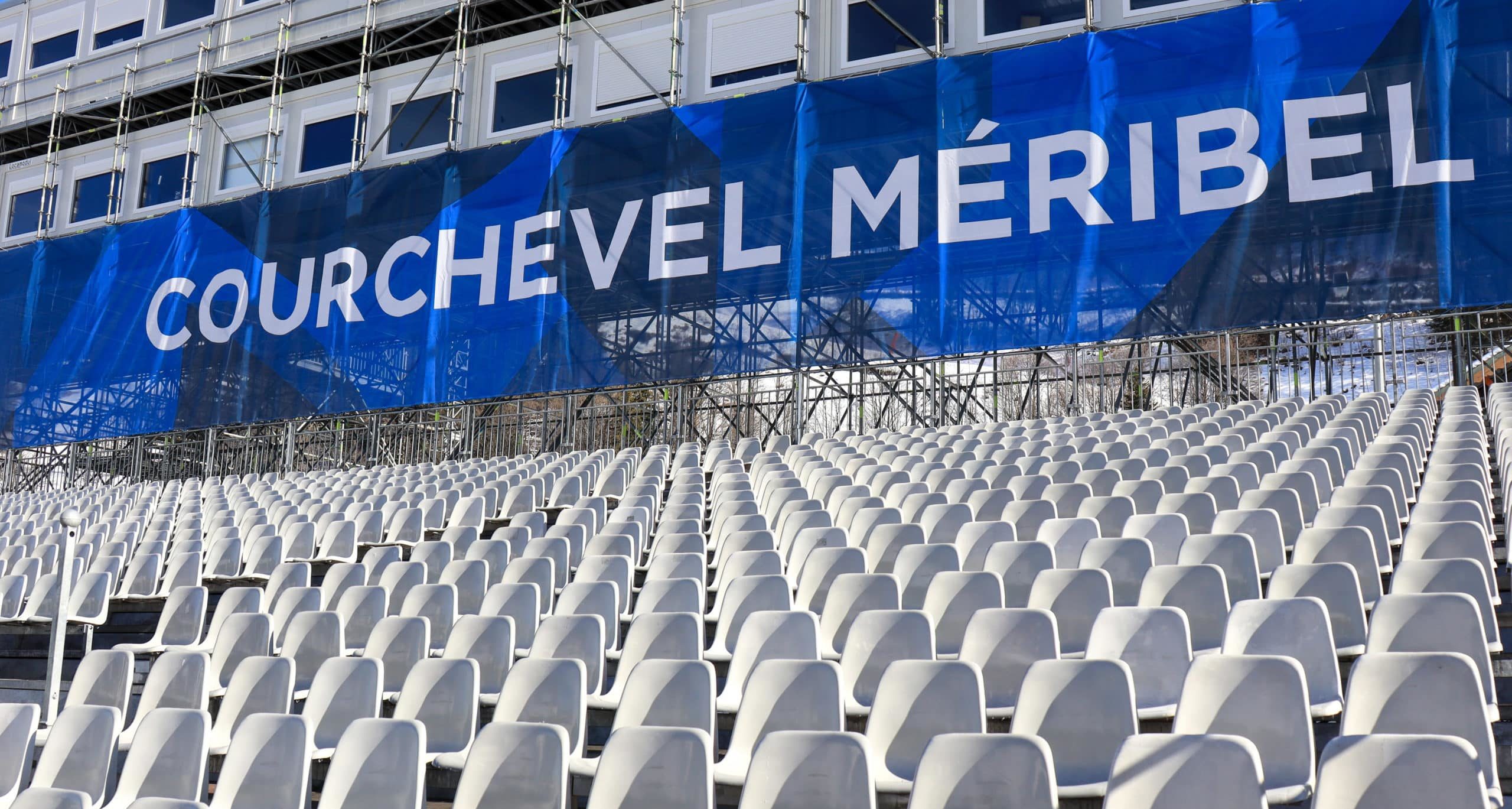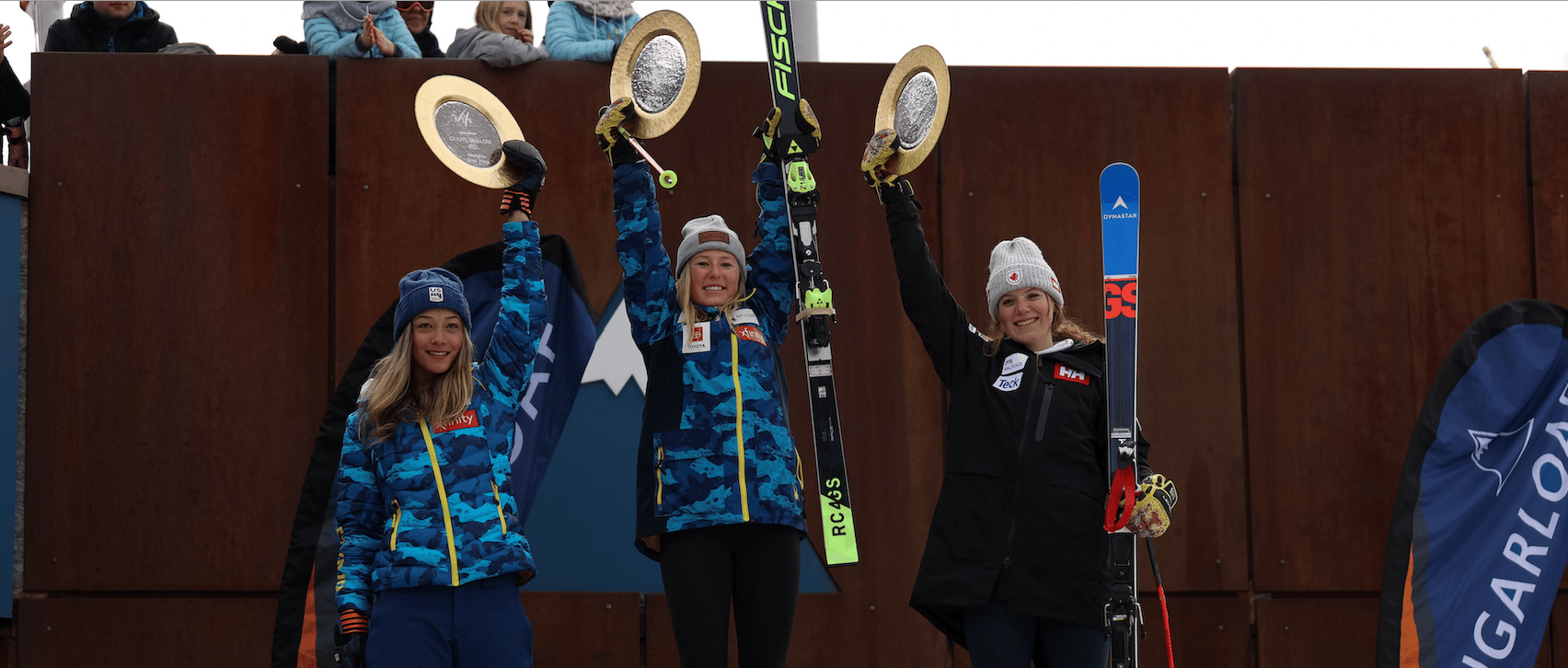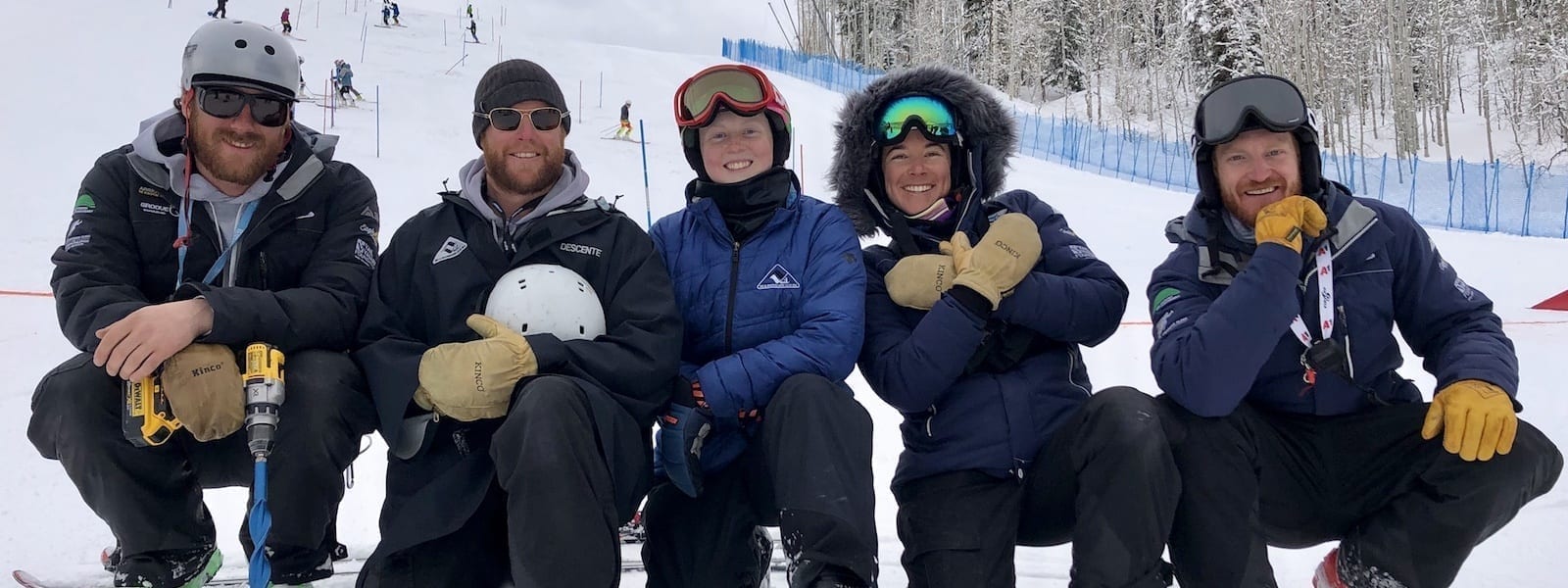Inside the Ski Racing Mind: Psych-down Techniques for Ski Racing
 It’s natural to feel some increase in your intensity before a race. You’re putting yourself to the test and want to ski your best. That increase in intensity means that your body is gearing up for the challenge. But when that rise in intensity turns to anxiety that can hurt your skiing, then you’ve got a problem. Rather than resigning yourself to being nervous, feeling bad, and skiing poorly, you can take active steps to reach and maintain your prime intensity so you can have your best race possible. There are a number of simple “psych-down” techniques you can use to get your intensity back under control.
It’s natural to feel some increase in your intensity before a race. You’re putting yourself to the test and want to ski your best. That increase in intensity means that your body is gearing up for the challenge. But when that rise in intensity turns to anxiety that can hurt your skiing, then you’ve got a problem. Rather than resigning yourself to being nervous, feeling bad, and skiing poorly, you can take active steps to reach and maintain your prime intensity so you can have your best race possible. There are a number of simple “psych-down” techniques you can use to get your intensity back under control.
Deep breathing. When you experience overintensity, one of the first things that’s disrupted is your breathing. It becomes short and choppy and you don’t get the oxygen you need to ski well. The most basic way to lower your intensity then is to take control of your breathing again by taking slow, deep breaths.
Deep breathing has several important benefits. It ensures that you get enough oxygen so your body can function well. By getting more oxygen into your body, you’ll relax, feel better, and it will give you a greater sense of control. This increased comfort will give you more confidence and enable you to more easily combat negative thoughts (which are often the cause of the overintensity). It will also help you let go of negative emotions, such as fear or frustration, and allow you to regain positive emotions such as excitement. Focusing on your breathing also acts to take your mind off of things that may be causing your overintensity.
Deep breathing should be a part of your pre-race routine. You should focus on your breathing throughout every phase of your start-area preparations. One place in particular where deep breathing can be especially valuable to reduce intensity is just before your race run. If you take two deep breaths when you climb into the starting gate, you’ll ensure that your body will be more relaxed, comfortable, and prepared for the upcoming run.
Muscle relaxation. Muscle tension is the most common symptom of overintensity. This is the most crippling physical symptom because if your muscles are tight and stiff, you simply won’t be able to ski at your highest level. Similar to deep breathing, muscle relaxation is beneficial because it allows you to regain control of your body when anxiety has taken that control away from you, and to make you feel more comfortable physically. It also offers the same mental and emotional advantages as does deep breathing including feeling more confident and focused.
There are two muscle-relaxation techniques you can use before a race run: passive relaxation and active relaxation.
Passive relaxation consists of imagining that tension is a liquid that fills your muscles creating discomfort that interferes with your body performing its best. The passive relaxation procedure involves taking a series of deep breaths during which time the liquid that represents your tension progressively drains out of your muscles. At the end, you should focus on your overall state of mental calmness and physical relaxation.
Active relaxation is used when your body is really tense and you can’t relax your muscles with passive relaxation. When your intensity is too high and your muscles are tight, it’s difficult to just relax them. So instead of trying to relax your muscles, do just the opposite. Tighten them more, then relax them. For example, before a race, your muscle tension might be at an 8, where 1 is totally relaxed and 10 is very tense, but you ski best at a 5. By further tightening your muscles up to a 10, the natural reaction is for your muscles to rebound back past 8 toward a more relaxed 5. So, making your muscles more tense at first results in them becoming more relaxed.
Active relaxation typically involves tightening and relaxing four major muscle groups: face and neck, arms and shoulders, chest and back, and buttocks and legs. It can also be individualized to focus on particular muscles that trouble you the most.
For each muscle group, tighten your muscles for five seconds, release with a deep breath, and repeat. As you go through the active relaxation procedure, focus on the differences between tension and relaxation, be aware of how you’re able to induce a greater feeling of relaxation and, at the end, focus on your over-all state of mental calmness and physical relaxation.
Slow the pace of preparation. A common side effect of overintensity is that racers tend to rush through their pre-race preparations, almost as if they want to get the race over with as soon as possible. So, to lower your intensity, slow your pace as you prepare for your race runs. Simply slowing your pace and giving yourself time to ease your breathing and relax your muscles will help you lower your intensity to its prime level. Process focus. One of the primary causes of overintensity is focusing on the outcome of the race. If you’re worried about winning or losing, you’re bound to get nervous. The prospect of losing is threatening, so that will make you anxious. The thought of winning, especially if it’s in a race that you don’t expect to win, can also be anxiety provoking because it may be unfamiliar or you may not be sure you deserve to win.
Process focus. One of the primary causes of overintensity is focusing on the outcome of the race. If you’re worried about winning or losing, you’re bound to get nervous. The prospect of losing is threatening, so that will make you anxious. The thought of winning, especially if it’s in a race that you don’t expect to win, can also be anxiety provoking because it may be unfamiliar or you may not be sure you deserve to win.
To reduce the anxiety caused by an outcome focus, redirect your focus onto the process. Ask yourself what do you need to do to ski your best? This process focus can include paying attention to your technique or tactics. Or it might involve focusing on mental skills such as positive thinking or the psych-down strategies I am currently describing. You might do some imagery, seeing and feeling yourself ski really well. You can also shift your focus onto your breathing which will take your mind off of the outcome and will directly relax your body by providing more oxygen to your system.
A process focus takes your mind off things that cause your over-intensity and shifts your focus onto things that will reduce your anxiety, build your confidence, and give you a greater sense of control over your skiing.
Keywords. Another focusing technique for lowering your intensity is to use what I call intensity keywords. These words act as reminders of what you need to do with your intensity to ski your best, for example, “Calm,” “Easy does it,” or “Be cool.” Keywords are especially important before a big race, such as one that will allow you to qualify for the next level of races, when you can get so wrapped up in the pressure that you forget to do the things you need to do to ski at your highest level. By saying the keyword between race runs, you’ll be reminded to use the psych-down techniques when your intensity starts to go up. I also recommend that you write one or two keywords on a piece of tape which you then put on skis or poles. Looking at the keywords on your equipment acts as a further reminder to say the keyword and lower your intensity.
Music. Music is one of the most common tools racers use to control their intensity. Top racers, such as Julia Mancuso, even listen to music before their race runs. We all know that music has a profound physical and emotional impact on us. Music has the ability to make us happy, sad, inspired, and motivated. Music can also excite or relax us.
Music is beneficial in several ways. It has a direct effect on you physically. Calming music slows your breathing and relaxes your muscles. Simply put, it makes you feel good. Mentally, it makes you feel positive and motivated. It also generates positive emotions such as joy and contentment. Finally, calming music takes your mind off of aspects of the ra
ce that may cause doubt or anxiety. The over-all sensation of listening to relaxing music is a generalized sense of peace and well-being.
Smile. The last technique for lowering intensity is one of the strangest and most effective I’ve ever come across. A few years ago, I was working with a World Cup racer who was having a terrible training session. She was skiing really poorly and her coach was getting frustrated with her. She approached me between runs feeling angry and on the edge of giving up, and her body was in knots. She asked me what she could do. I didn’t have a good answer until an idea just popped into my head. I told her to smile. She said, I don’t want to smile. I told her to smile. She said she was not happy and didn’t want to smile. I told her again to smile. This time, just to get me off her back, she smiled. I told her to hold the smile. During the next two minutes there was an amazing physical and emotional transformation. As she stood there with the smile on her face, the tension began to drain out of her body. Her breathing became slow and deep. She said that she was feeling better. In a short time, she was looking more relaxed and happier. She returned to training and her skiing improved dramatically during the remainder of the training session.
Her response was so dramatic that I wanted to learn how such a change could occur. When I returned to my office, I looked at the research related to smiling and learned two things. First, as we grow up, we become conditioned to the positive effects of smiling. In other words, we learn that when we smile, it means we’re happy and life is good. Second, there’s been some fascinating research looking at the effects of smiling on our brain chemistry. What this research has found is that when we smile, it releases brain chemicals called endorphins which have an actual physiologically relaxing effect. So, next time you feel nervous, force yourself to smile.
For all of these psych-down techniques to be effective, you should practice them in training and less important races. The goal is to ingrain them so well that when you get to a major race where you’re likely to feel nervous, you’ll automatically use them, your intensity will decrease to a more comfortable level, and you’ll be better prepared to ski your best and have a great race.
Follow me on Facebook, Twitter, or YouTube. Watch my 2010 Winter Olympics Discovery Channel interview on fear in high-risk winter sports here.
About Dr. Jim Taylor:
Dr. Jim Taylor knows the psychology of ski racing! He competed internationally for Burke Mtn. Academy, Middlebury College, and the University of Colorado. For the past 25 years, Jim has worked with many of America’s leading junior race programs as well as World Cup competitors from many countries. He is a clinical associate professor in the Sport&Performance Psychology graduate program at the University of Denver. Jim is the author of Prime Ski Racing: Triumph of the Racer’s Mind and his latest parenting book is Your Children are Listening: Nine Messages They Need to Hear From You.
Click here to go to Dr. Jim’s archive.





















